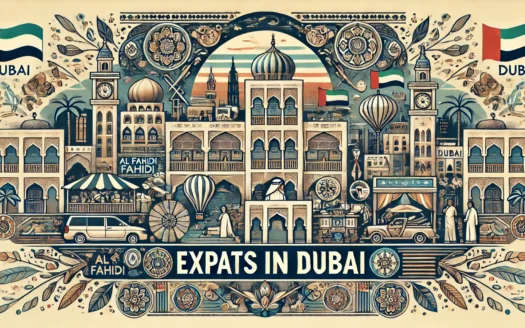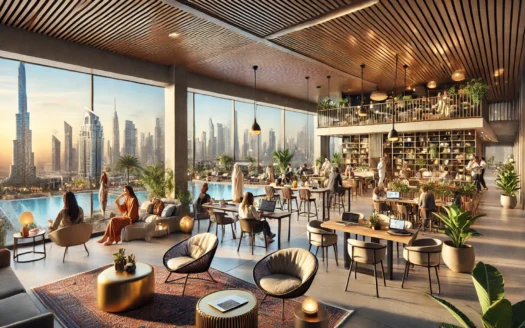From Sand to Skyline: The Evolution of Dubai’s Real Estate Landscape
Dubai, a city synonymous with luxury, innovation, and architectural marvels, has undergone a staggering transformation over the past few decades. From a modest trading port on the edge of the Arabian Desert to a global metropolis boasting some of the world’s most iconic buildings, Dubai’s real estate evolution is nothing short of extraordinary. This journey from sand to skyline is a testament to visionary leadership, ambitious planning, and relentless pursuit of excellence.
The Humble Beginnings
The story of Dubai’s real estate begins in the early 20th century when it was primarily a small fishing and pearl-diving village. The discovery of oil in 1966 marked a turning point, providing the financial resources needed to fuel development. However, it wasn’t just oil that transformed Dubai; it was the strategic vision of its leaders. Sheikh Rashid bin Saeed Al Maktoum’s foresight in investing in infrastructure laid the foundation for Dubai’s future growth.
The Birth of Modern Dubai
The 1970s and 1980s saw the initial phase of urban development with the construction of essential infrastructure, including ports, airports, and road networks. The establishment of the Jebel Ali Port in 1979, the world’s largest man-made harbor, was a significant milestone, positioning Dubai as a crucial trade hub.
The real estate landscape began to change dramatically in the 1990s. The launch of freehold property laws allowed foreigners to own property in designated areas, sparking a real estate boom. The vision was clear: to create a city that would attract global businesses and tourists alike.
Iconic Developments and Architectural Wonders
Dubai’s real estate narrative is incomplete without mentioning its iconic developments. The construction of the Burj Al Arab in 1999 put Dubai on the global map as a luxury destination. Standing on an artificial island, this sail-shaped hotel became a symbol of Dubai’s opulence and ambition.
The early 2000s marked the era of superlatives. The construction of Palm Jumeirah, an artificial archipelago, began in 2001. This engineering marvel added miles of coastline and offered luxurious waterfront living, attracting celebrities and high-net-worth individuals from around the world.
In 2010, Dubai achieved another milestone with the inauguration of the Burj Khalifa, the tallest building in the world. This architectural wonder stands at 828 meters and exemplifies Dubai’s commitment to pushing boundaries. The surrounding Downtown Dubai area, including The Dubai Mall, one of the world’s largest shopping centers, further cemented Dubai’s status as a global city.
Sustainable and Smart City Initiatives
In recent years, Dubai’s real estate focus has shifted towards sustainability and smart city initiatives. The Dubai Sustainable City, launched in 2015, is a prime example. This development emphasizes green living with energy-efficient homes, solar power, and ample green spaces, setting a benchmark for future projects.
Dubai’s smart city initiatives aim to integrate technology into urban planning, enhancing the quality of life for residents. Smart Dubai, launched in 2014, envisions a city where government services are accessible at the fingertips, and data-driven solutions improve urban living.
The Impact of Expo 2020
Expo 2020, originally scheduled for October 2020 but postponed to 2021 due to the pandemic, has had a significant impact on Dubai’s real estate. This global event has spurred the development of infrastructure and real estate projects, including the Expo 2020 site itself, which will transform into District 2020 – a mixed-use community with a focus on sustainability and innovation.
The influx of visitors and global attention has boosted the real estate market, with increased demand for residential, commercial, and hospitality properties. The legacy of Expo 2020 is expected to drive Dubai’s growth for years to come.
The Future: Beyond the Skyline
Dubai’s real estate landscape continues to evolve. The city’s leadership is focused on diversifying the economy, reducing reliance on oil, and positioning Dubai as a hub for technology, finance, and tourism. Projects like the Dubai Creek Harbour, set to feature the Dubai Creek Tower – poised to surpass the Burj Khalifa in height – reflect the city’s unyielding ambition.
Furthermore, the emphasis on sustainability, smart technologies, and innovative design will shape the future of Dubai’s real estate. The integration of artificial intelligence, blockchain, and IoT in urban planning will create smarter, more efficient cities.
Conclusion
From its humble beginnings as a desert trading post to a global metropolis, Dubai’s real estate evolution is a story of vision, ambition, and relentless pursuit of excellence. The city’s skyline, dotted with architectural marvels, stands as a testament to what can be achieved with visionary leadership and innovative thinking. As Dubai continues to grow and evolve, its real estate landscape will undoubtedly remain at the forefront of global urban development, setting new benchmarks for cities worldwide.
Experience the dynamic journey of Dubai’s real estate and discover the endless possibilities this vibrant city has to offer. Whether you’re looking to invest, live, or simply marvel at its wonders, Dubai’s skyline promises a future as bright as its past.
Related Posts
Dubai’s Best Real Estate Deals: How to Spot ...
The Expat Experience: Finding the Perfect Ho...
The Rise of Co-Living Spaces in Dubai
Search



